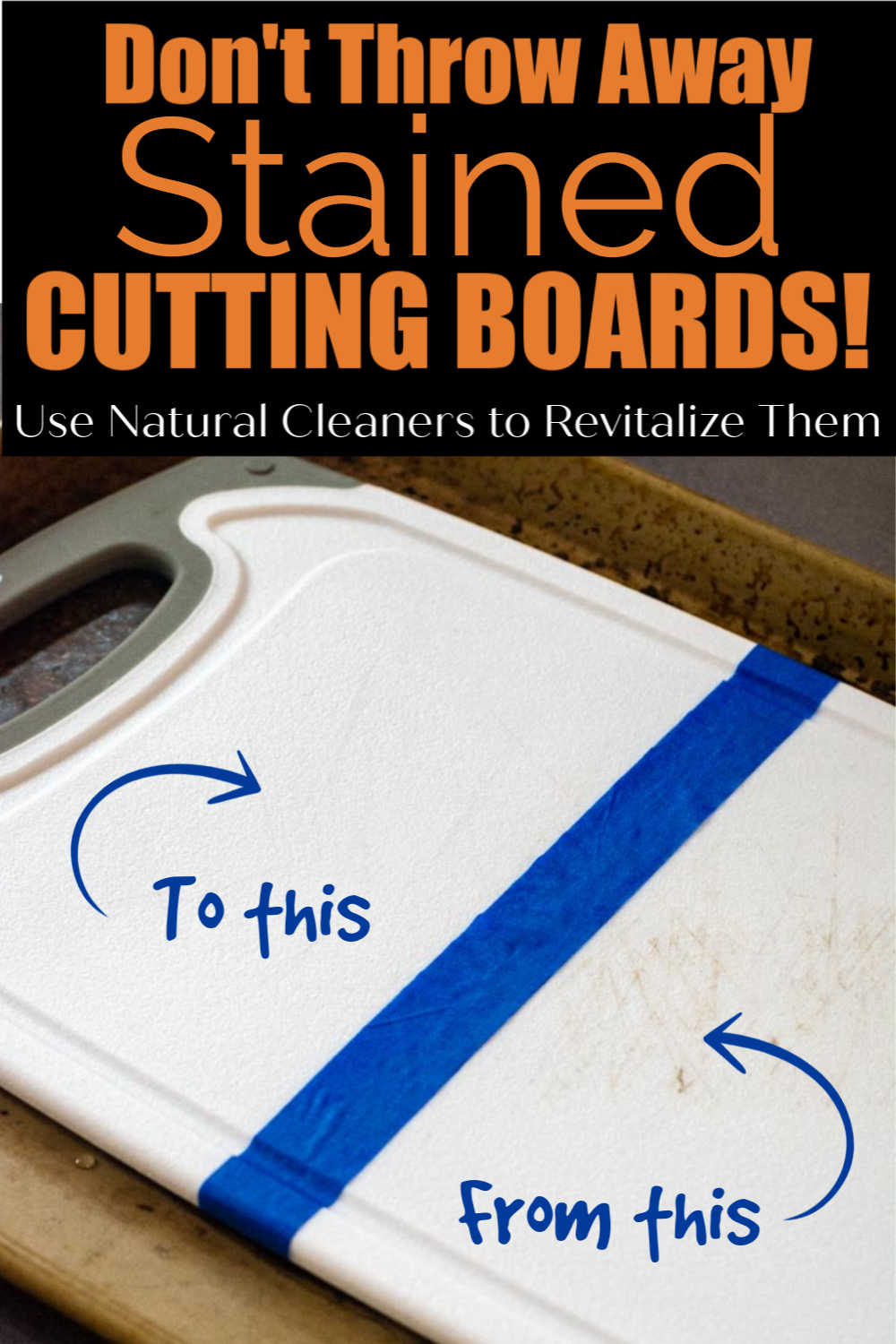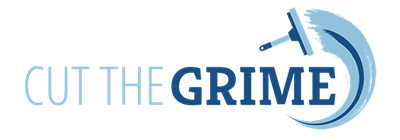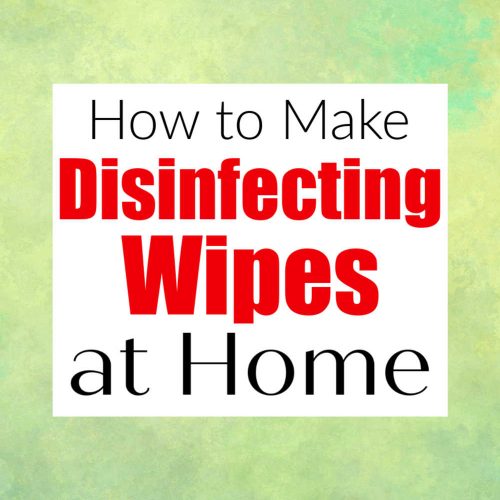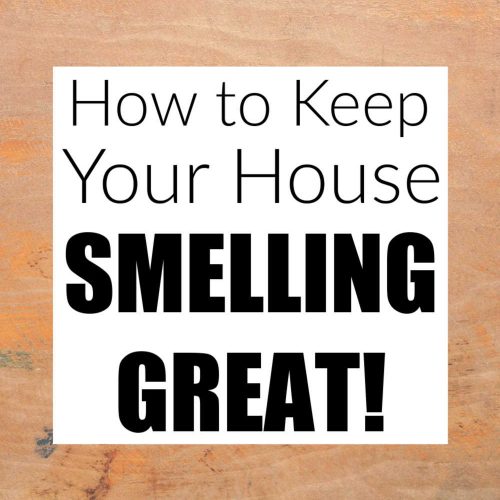Nearly every kitchen has a plastic cutting board that could use a proper deep cleaning. If you’re a member of the stained plastic cutting board club, you are not alone – we all have them! The good news is that you don’t need to throw it away or go to extreme measures and use bleach. This article will show you my favorite way to remove stains from plastic cutting boards.
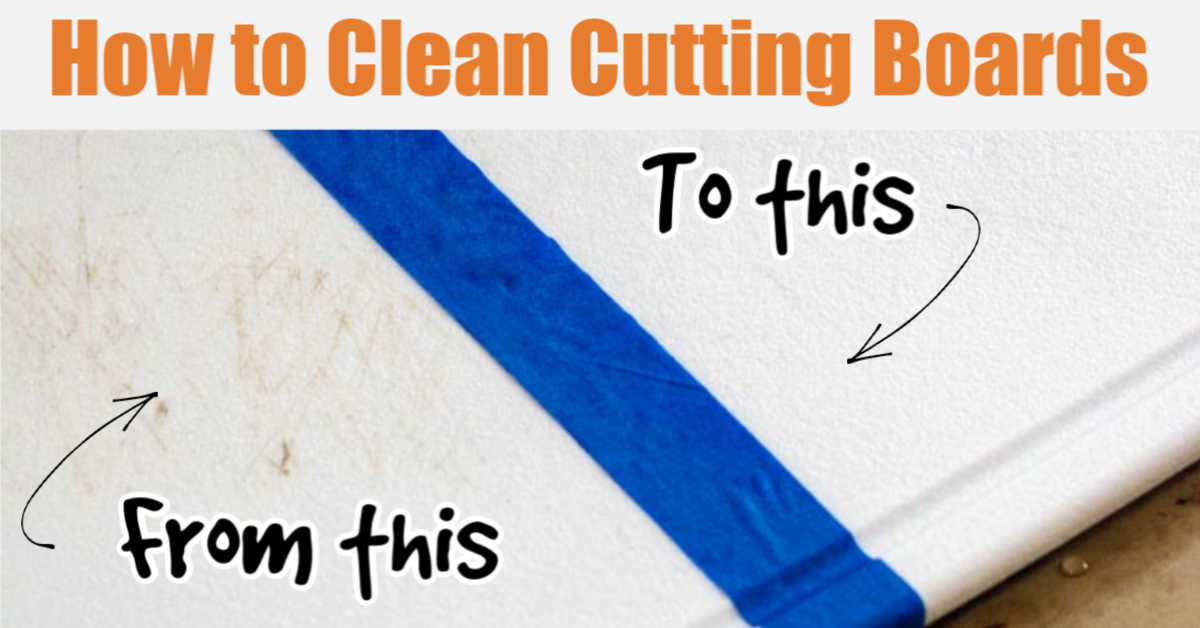
All plastic cutting boards are prone to acquiring stubborn stains. Knife marks cut the surface of the plastic and allow dirt, grime and stains to show through. Luckily, there are some effective and natural DIY methods for keeping your plastic cutting boards looking brand new.
Why You Shouldn’t Use Bleach To Remove Stains From Your Plastic Cutting Boards
Before you run to grab a bottle of bleach to remove stains from your cutting board: don’t! Although a quick Google search will reveal that this is a popular method for cleaning cutting boards, we strongly advise against ever, ever, ever using bleach on surfaces that will touch your food.
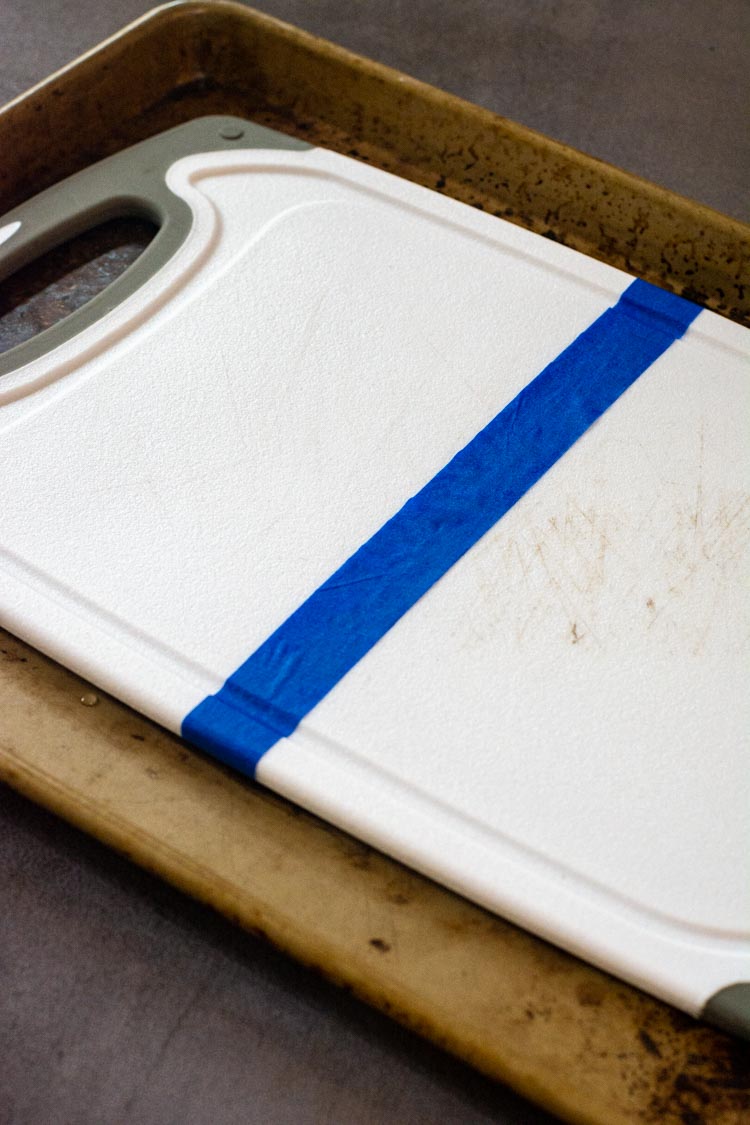
Bleach is extremely toxic for human consumption. Even though it should completely break down and wash off, the stuff is extremely strong. We don’t want remnants of the chemicals to remain embedded in your cutting board even after you rinse it off.
Plus, we’ve got some ultra-effective methods that are much less risky to your health using natural, non-harmful ingredients. So, leave your harsh chemical solutions out of your kitchen!
What Are The Problems With Plastic Cutting Boards?
- They acquire stains easily that are hard to remove. Even the most effective dishwashers have trouble removing the stains from plastic cutting boards.
- Knives create shallow cuts and grooves on the surface of plastic cutting boards. This means it is easy for foods, oils, and bacteria to become trapped.
- Plastic cutting boards can start to smell. GROSS!
What Are The Best Ways To Keep Plastic Cutting Boards Clean?
- Use the dishwasher: the heat and abrasive scrubbing power is your cutting board’s best friend.
- Use a strong scrub brush to effectively remove food, oil, and bacteria by hand.
- For tough stains that won’t lift off after a thorough wash, try the recipe below.

Use Distilled White Vinegar To Disinfect Your Cutting Boards
It’s worth mentioning that you should designate specific cutting boards to cut similar items to reduce the spread of bacteria. For example, my small white plastic cutting board is only used for cutting meats and fish, whereas my larger white cutting board I use for cutting fruits and vegetables. Since the grooves made by knife marks are perfect hiding places for bacteria, this helps me prevent cross-contamination.
Vinegar Disinfecting Solution
Even a thorough hand wash with detergent or a cycle in the dishwasher doesn’t rid a cutting board entirely of bacteria and germs.
I start the cleaning process by scrubbing with a vinegar disinfecting solution. Mix ½ cup of white vinegar with 5-10 drops of lemon essential oil in a bowl.
Use a scrub brush to give the cutting board a good scrub, dipping the brush into the solution frequently between scrubs to make sure you’re really saturating the board with the solution. Rinse the cutting board thoroughly and then let it completely dry before using it again to let the vinegar smell dissipate. This disinfecting method effectively kills hidden bacteria and leaves your cutting board smelling ultra-fresh and clean afterwards.
If you don’t have vinegar on hand, you can also disinfect cutting boards with a baking soda and lemon essential oil combination. Simply make a thick paste of two parts baking soda to one part water and add the 5 drops of essential oil. Slather the paste onto both surfaces of the cutting board, paying extra attention to any knife grooves. Allow it to sit for a few minutes, and then take a bristle brush and give it a really good scrub all over.
When Is It Time To Get A New Cutting Board?
Eventually all plastic cutting boards wear out. Regularly cleaning them with a combination of hydrogen peroxide, baking soda, and dishwashing soap can lengthen their life-span, they will need to be replaced at some point. But, when is it time to stop disinfecting and de-staining the old one and buy a new one? Typically when the board becomes full of knife-cuts, deep grooves, stains that just won’t budge, and any warping are all indicators that your cutting board is ready to RIP.
Why Does This Recipe Work?
Hydrogen peroxide is a kitchen-friendly bleaching agent. It is used in laundry detergents and as a common hair lightener. It will help to whiten the cutting board and is used as a disinfectant.
Dish soap helps to cut grease and will remove anything left in the rough crevices of the cutting board.
Baking soda is a natural deodorizer as well as an abrasive, and helps to scrub the stains away. This also works to effectively remove unwanted smells from your plastic cutting board.
Related Posts
Natural Cleaner to Remove Stains from Plastic Cutting Boards
Materials
- 4 tbsp Baking Soda
- 2 tbsp Dish Soap
- 3 tbsp Hydrogen Peroxide
Instructions
- Mix all of the ingredients into a bowl. It should be a thick consistency, more like a paste than a liquid. If it’s too wet, it will just bead off the cutting board and not do its job. You want this to stick.

- Evenly spread the mixture onto one side of the cutting board and let it sit overnight in an old sheet pan.
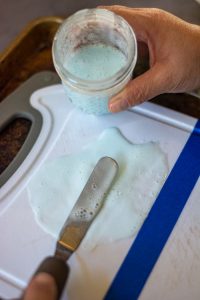
- Fold a paper towel several times and lay it over the mixture. Dampen it with a few tablespoons of hydrogen peroxide just to make sure the mixture does not dry out overnight.

- Scrub the mixture off of the cutting board in the morning using a rough scrub brush. Rinse it thoroughly with water.

- Turn the cutting board over and repeat the process on the other side.
